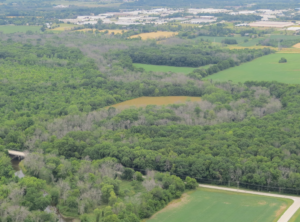Forest health staff recently produced a map that highlights a gradient of damage from southeastern to northwestern Wisconsin, which roughly corresponds to the length of time EAB has been present in these parts of the state. Whatever the level of damage, homeowners and landowners should consider treating healthy ash, including trees that have responded well to previous treatments, or removing declining, untreated ash before they become hazardous and even more costly to remove.

County-level assessment of damage to ash population by emerald ash borer, 2019.
The new map was created from both aerial and ground observations of damage to ash populations in the state. Information was averaged for each county, providing a general assessment of the intensity of EAB damage. This general assessment does not capture variability within each county. Some communities and woodlots in the county will have differing levels of damage than the range indicated for that county.
Recommendations to treat or remove ash still apply across the state. If homeowners or property managers have healthy ash trees on their properties, insecticidal treatments are the only option for keeping them alive. Similarly, if ash trees were treated in the past and still appear to be healthy, follow-up treatments are recommended to ensure they survive through subsequent years of EAB activity. If ash trees are already showing signs of decline, or if they are considered low-value and unsuitable for treatment, removing them now will save money and avoid the safety risks associated with EAB-infested ash. For more information, check out this DNR publication on the cost and safety concerns of infested ash trees.
Along with damage caused by EAB, ash in many parts of the state were further stressed by high water levels, with weather in 2019 being unusually wet throughout the growing season. Flooding persisted all summer in many counties, leading to additional stress for green and black ash that are dominant trees along rivers, ponds and lakes. This added stress resulted in accelerated decline of many ash trees in these settings.

Ash impacts can be seen in the Root River corridor in eastern Wisconsin, where ash makes up a primary component of the overstory.
Emerald ash borer continues its spread across the state, leaving behind a wake of ash decline and mortality in both urban and rural settings. For more information on EAB identification, its impacts and management options, visit the DNR EAB webpage.
